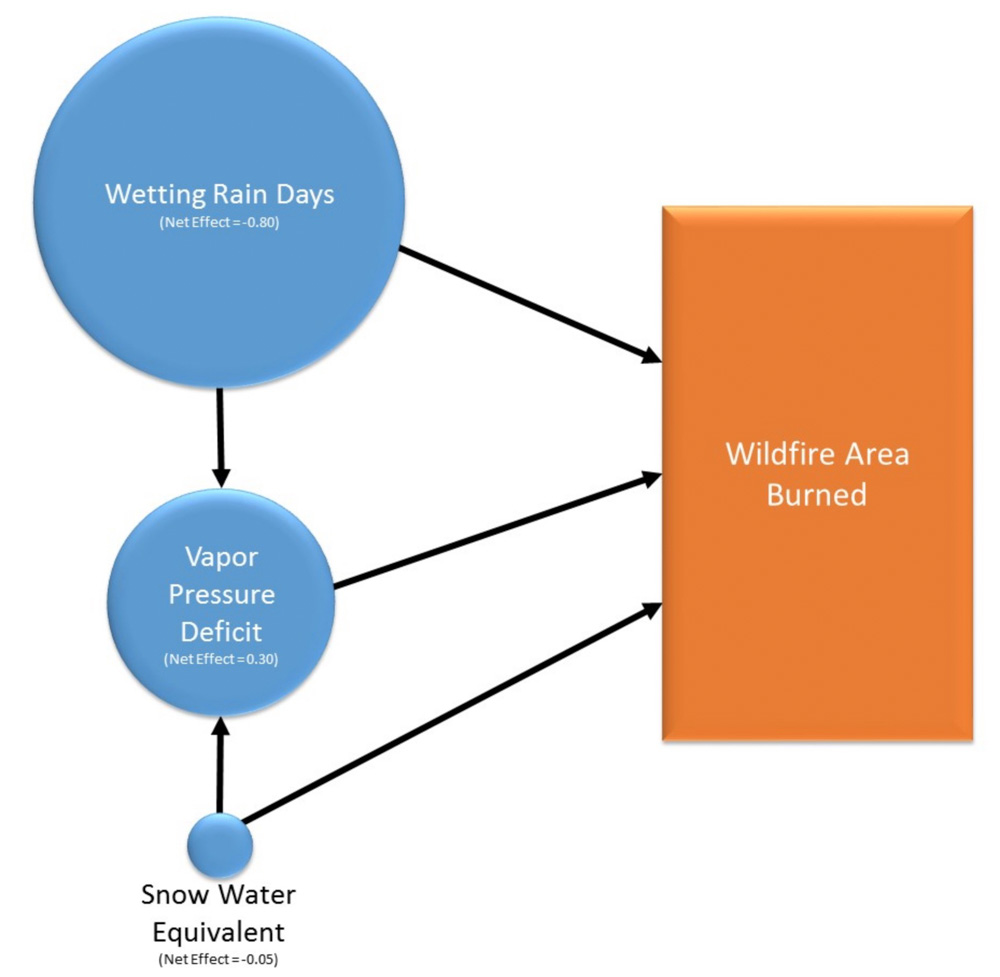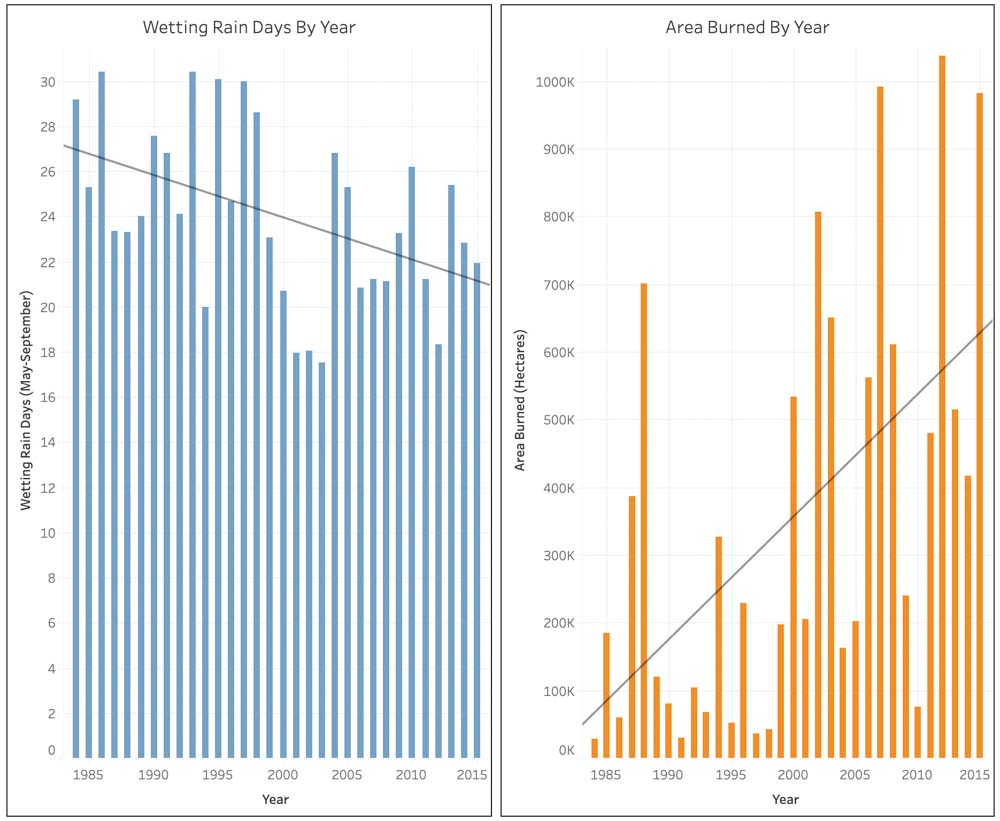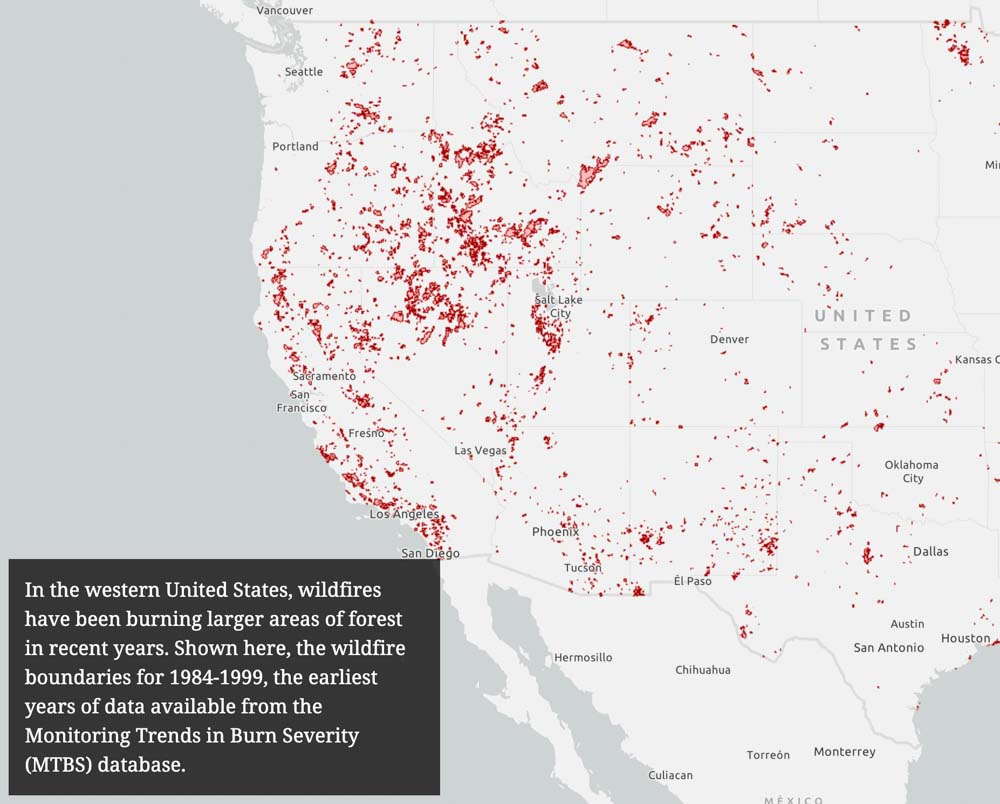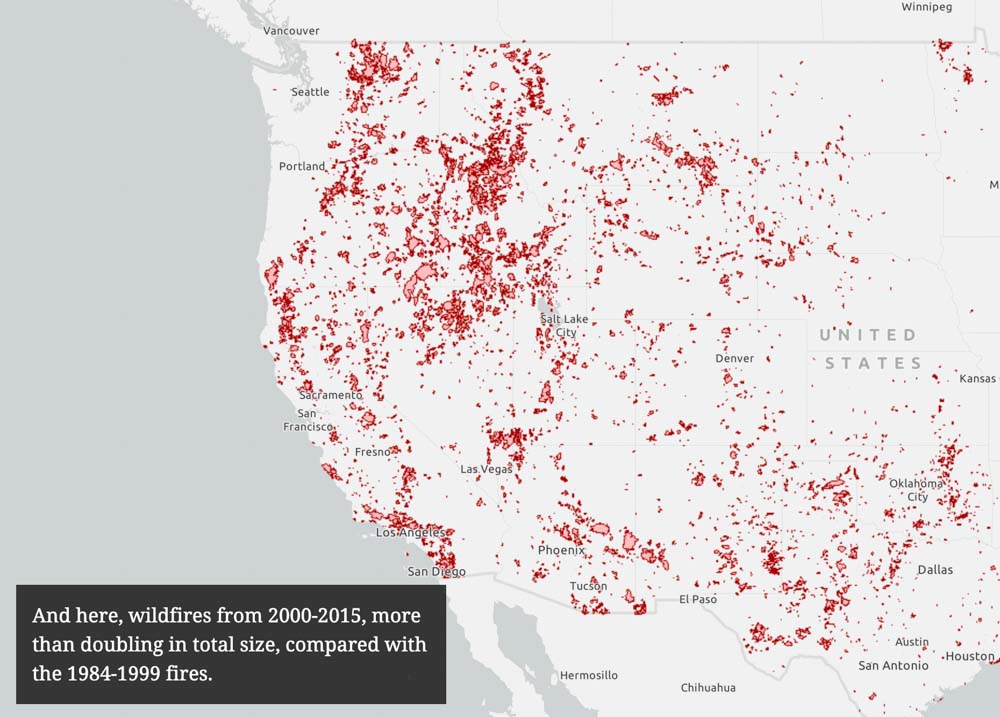Researchers have developed a fancy graphic presentation that explores the relationship between precipitation and the annual area burned in the Western United States. You should check it out.
They concluded that weather conditions DURING the fire season, humidity and rain, have far more effect on total acres burned than winter snow.
The figures and text (below) here are excerpts from the document.
“Wildfires have been increasing: but why? Is it the effect of increasing temperatures? Declining snowpack? Decreasing precipitation? In their recent paper, “Decreasing fire season precipitation increased recent western US forest wildfire activity,” Zachary Holden and his co-authors explore the relative influence of these factors. They first identified the variables related to temperature, snow, and precipitation that best predicted area burned:
“Temperature: vapor pressure deficit [VPD] (the difference between the maximum amount of water the air can hold and the amount it actually holds)
“Snow: maximum annual snow water equivalent [SWE], and
“Precipitation: wetting rain days [WRD], days with more than 1/10 inch of rain, in the months of May through September.”





Occurrence is one thing, severity is another.
Yep. Here in western Montana, four or five months of little to zero rain and temperatures in the mid- to high-90s every day, cook the forests. Who is surprised that the fires are horrendous? Not I.
Watching the July mostly dry lightning event that started last year’s primary wildfires in Southern Oregon – my rough guess is that it rained 1/4 inch (from watching similar events where the rain made it all the way to the ground).
However, the rain during that event didn’t wet ANYTHING.
Temp’s were 90+ F.
I think when temps are “up there” it takes more than 1/10 inch to wet the top surface layer of dry leaves.
Otherwise, when the rain ends, humidity is simply up a bit and there are dozens of lightning strike fires to deal with.
During a controlled burn (in the forest) last week (late April 2019), I witnessed fire behavior that I normally see in late May & June.
I would describe the forest as having 2 states – endothermic to neutral, and exothermic. If you drop a lit match on top of the top layer of dry leaves – when it’s moist/ endothermic – the match goes out & nothing happens.
A similar test occurs informally when a burning log breaks off and rolls a few feet, sending small pieces of smoking burning wood into the leaves on the circumference of the fire area. Desirably, they will self-extinguish.
When the forest is in an “exothermic” state, each of those simple sparks will start a new small fire.
No matter the calendar date, when I observe that kind of fire behavior, I conclude “the forest thinks it’s summer” and only do controlled burns in the driveway surrounded by 50 feet of gravel, green lawn etc.
I haven’t formalized my informal “endothermic/ exothermic” test, but this year, I had to stop doing controlled burns about a month earlier than in previous years.
I have a feeling 2019 will be a Very Difficult Year for all of us, fire-wise. Right now I am focussing on the 6 acres directly behind my house. Positioning about a 100x 5 gallon buckets of water (with sealed lids) every 25 yards on the hill, and maybe a dozen metal rakes. Hoping that I will have a chance to deal with any small fire when it’s still in the “burning leaves” state.